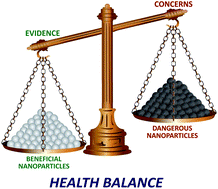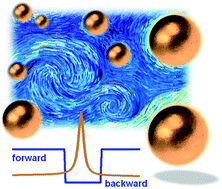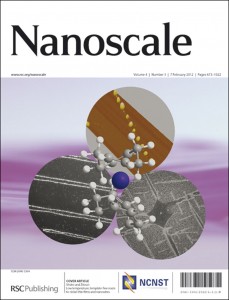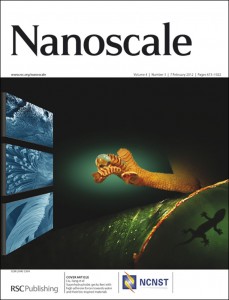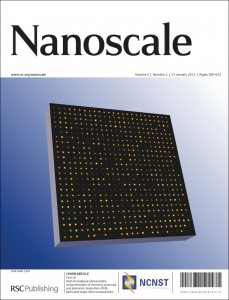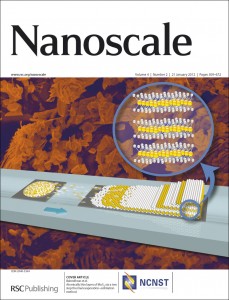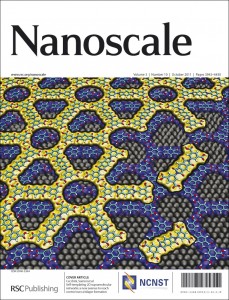Recently knighted Sirs Andre Geim and Konstantin Novoselov must feel a bit like The Beatles. Not because they have legions of adoring screaming fans (well, they might, but science isn’t as sexy as rock music), but because you could probably draw parallels between the influences of the Liverpudlian quartet on music and the isolation of graphene on materials science.
Graphenemania doesn’t seem to be abating any time soon either. The latest episode of this incredible craze sees Tian-Ling Ren and his team at Tsinghua University in Beijing taking advantage of single-layer graphene’s (SLG) very low heat capacity per unit area (one of its many remarkable properties) to use it as a sound-emitting material.
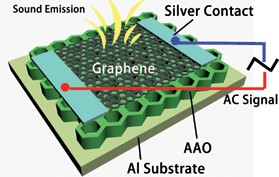
Device structure of the grapene "speaker".
The researchers created a device using electrodes deposited onto two ends of a sheet of SLG, which itself is placed on an anodic aluminium oxide substrate. When an electric sound-frequency signal is applied to the graphene, sound is produced through the thermoacoustic effect. In short, when electricity passes through the graphene, the heat produced is transferred to the air around the device surface. The fluctuations in this heat as the current itself fluctuates causes the air to vibrate, producing sound.
Although a previous piece of work has already used graphene in a thin and transparent sound-emitting device, it was merely used as electrodes. Significantly, this is the first time that the material has been demonstrated to actually be able to produce sound itself.
The team found that SLG has a sound pressure level of about 95 dB, which puts it on a par with that experienced when standing a metre from a disco speaker. This makes it ideal for uses such as speakers and earphones, perfect for science’s own ‘Fab Two’ to use to listen to Sergeant Pepper’s Lonely Hearts Club Band.
Read more about this ‘rocking’ new application for graphene here.
Single-layer graphene sound-emitting devices: experiments and modeling
He Tian, Dan Xie, Yi Yang, Tian-Ling Ren, Yu-Feng Wang, Chang-Jian Zhou, Ping-Gang Peng, Li-Gang Wang and Li-Tian Liu
Nanoscale, 2012, DOI: 10.1039/C2NR11572G
